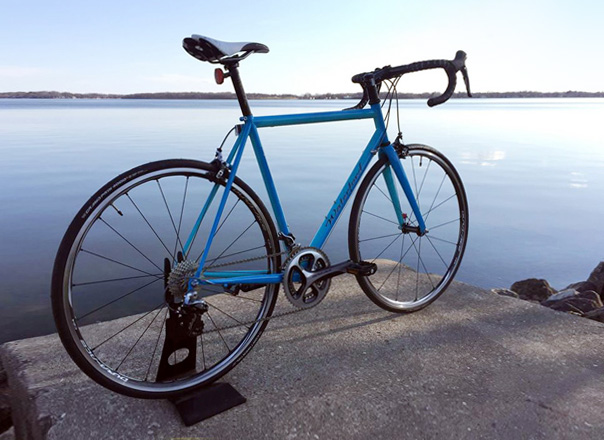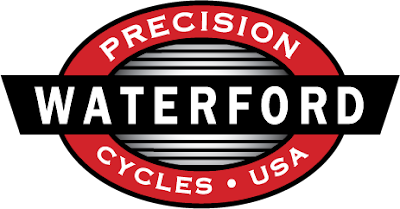I plan to return one day and find out.
Recently I learned about something else that was made in this building, next door:
At first glance, it looks like just another storefront building on a block that gentrification hasn't yet found. Its owners told me that sofas were once made within its walls. However, they were unaware that something meant for a decidedly un-sedentary pursuit was also made inside its confines:
 |
| Dick Power track bike, 1963 |
About ten kilometers from my apartment is the hipster haven of Williamsburg, Brooklyn, where there seems to be a bike boutique (next to a bar that serves only craft beers, or course!) on every block. I can recall a time when the area more closely resembled the environs of the taco restaurant and its neighbor: a place full of blue-collar residents and immigrants, where few, if any, adults ride bicycles.
The neighborhood around Santa Fe Taco---Sunnyside, Queens--might well be on its way to becoming like Williamsburg. Only four kilometers, in another direction, from my apartment, it was long known, along with neighboring Woodside, for the Irish bars and German saloons that served the blue-collar immigrants and first-generation Irish- and German-Americans who lived in the area. (Both neighborhoods still have large Irish populations but also have perhaps the greatest concentration of Filipinos east of California.) Sunnyside and Woodside did not suffer the devastation other blue-collar neighborhoods (like Williamsburg) endured, but nevertheless have experienced changes that threaten to erase some of their heritage.
A part of that heritage that is unknown to almost everyone who lives in the neighborhood involves the bikes that were made and sold in that unprepossessing building next to a Taco restaurant.
 |
| Dick Power in front of his shop--in the building next to the taco restaurant!--in 1939. |
During the "Dark Ages" of cycling--roughly the two decades or so following World War II--there existed in a few American locales, including New York City, a small but tight-knit community of racers and other adult cyclists. Shops such as Thomas Avenia's in East Harlem and Kopp's in Princeton catered to them. And there was a small but dedicated group of framebuilders, some of whom also owned and operated retail shops, who catered to those riders.
Dick Power was one of them. From his shop and frameworks at 4710 47th Avenue in Sunnyside, he turned out some beautifully-crafted frames that are prized by riders as well as collectors. Power, who died in 1973, plied his trade and served as a coach and trainer from the 1930s through the 1960s. However, the loss of his son--executed for his role in a robbery gone wrong that resulted in the death of a police officer--propelled him onto a mission to recruit and mentor young people into cycling.
Among those he encouraged, and for whom he built bikes, were several female cyclists. In the 1950s, the world of cycling, including racing, was even more of a male preserve than it is now. Power's mentorship of those young women was seen as radical in his time.
I must say, though, that it must have been interesting, to say the least, for a young woman to be coached by a man with a name like "Dick Power". Than again, those times were more innocent, I imagine!

















